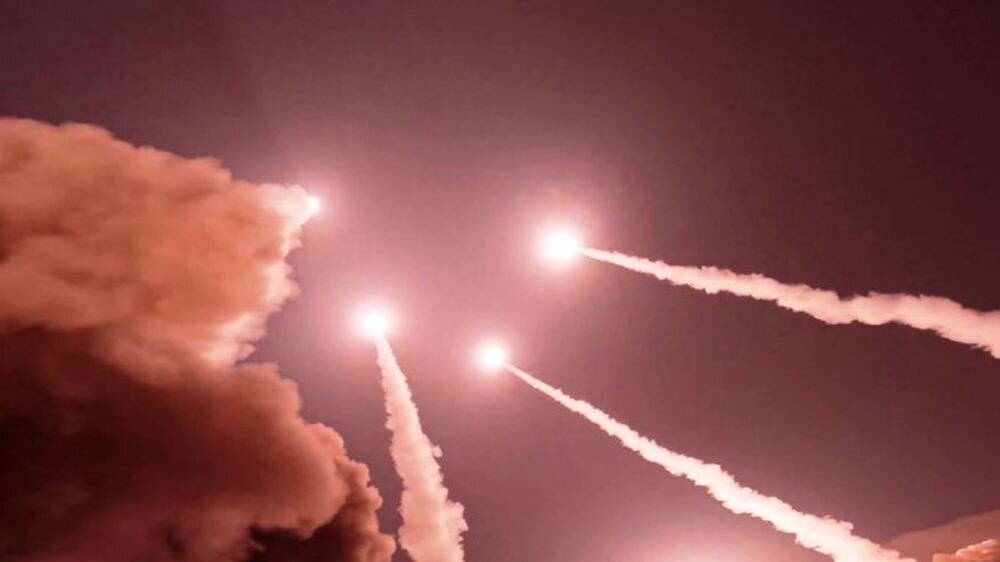Madrid – The year 1403 of the Persian calendar was over, leaving behind a whirlwind of political events that changed the landscape of Iran and its surroundings. The strength of these developments is hard to believe that everything happened within just 12 months.
In 1403, for the first time in 43 years, Iranian President Ebrahim Raisi died while in office, forcing an early election. Meanwhile, after decades of indirect conflict between Iran and Israel, they carried out a direct and formal military strike with each other for the first time, marking a turning point in regional conflict.
In this regard, in 1403, Iran abandoned the traditional doctrine of “strategic patience” in favour of a policy of “active deterrence.” From a strategic perspective, this shift means that attacks on military personnel and facilities will be met with direct responses.
The strategic doctrine change took place at the beginning of the year after an Israeli missile attack on a building that houses an Iranian consulate in Damascus in April. The attack resulted in the killing of seven members of the Islamic Revolutionary Guard Corps (IRGC), including Mohammadrezazadehi.
Iran’s response to the attack came in the form of an operation known as the “real promise” that took place 12 days later. Military, the operation consists of multiple drone and missile strikes, resulting in a series of cyberattacks targeting the Zionist regime’s power grid and radar systems, leading to a widespread power outage in the region. The first wave involved dozens of Shahed-136 Kamikaze Drones, totaling about 100 units. This was followed by three additional strikes at approximately 30-minute intervals, with a total of 400-500 drones being launched.
In May, the helicopter carried President Ebrahim Raisi, Foreign Minister Hossein Amir Abdrahian, and other officials. All passengers on board lost their lives.
One of the key doctrines leading President Raisi’s foreign policy was his “neighbors” which aimed to strengthen relations with regional countries. This doctrine, the basis of Iran’s regional policy, must be analyzed along with two other fundamental strategic pillars of his administration’s foreign policy. Unwavering support for Palestine and his government’s central priority, the “Appearance to the East” policy is designed to integrate political and strategic cooperation with the eastern territories of political and western economies.
The first round of early elections took place in June. Masoud Pezeshkian appeared as the winner with 10.4 million votes (43.5% of the total), followed by Saeed Jalili with 9.4 million votes (37.7%). Mohammad Qalibaf secured 3.4 million (14%), while Mohammad Pourmohammadi received 200,000 votes (0.8%).
The second round was held on July 5th, as none of the candidates secured the required majority (50% and 1 vote). In this round, Pezeshkian was elected Iran’s new president after winning around 16.4 million votes. Jaliri has won around 13.5 million votes on his side.
Pezeshkian’s election was overshadowed by an assassination on the day of the inauguration of Ismail Hanie, head of Hamas’ Politics Bureau, who attended as a guest invited to the Iranian president’s oath ceremony.
Targeted assassination strategies have been adopted by Israel for decades. The Israeli intelligence agency, Mossad, has a long history of operational activities against other Israeli enemies in Europe, Syria, Lebanon, Egypt and Iran, against Palestinian figures and other enemies. However, this strategy failed if the ultimate goal was to undermine groups opposed to Palestinian colonization. As in Honey’s case, all assassinated leaders had successors.
In September, the electronics used by Hezbollah in Lebanon were targeted in a regulated explosion, causing numerous casualties, including civilians, and injured Iranian ambassadors in Lebanon.
That same month, Secretary-General Hezbollah Hassan Nasrara, along with IRGC’s deputy director Abbas Nilfoshan, was assassinated on an Israeli strike in Beirut. Hezbollah challenged Israel’s military control by establishing a “no-go zone” within Israel’s occupied territory, forcing thousands of settlers to flee the north.
In October, Iran launched “True Promise II” in retaliation. Nearly 400 ballistic missiles have been fired at major military targets in Tel Aviv and other regions, according to an IRGC statement. Iranian sources claimed that over 80% of the missiles had hit the target, and that Mossad headquarters was destroyed in the attack. The Negev Airbase, which housed the F-35 Fighter Squadron, was also attacked.
On October 26, Israel responded with a series of airstrikes against Iran. Iranian military sources reported that limited damage occurred in Tehran, Huzestan and Ilam, but most projectiles were intercepted.
In November, Iran’s most important event was Donald Trump’s victory in the US election. Despite speculation about an internal division within his administration, Trump reinstated a “maximum pressure” policy on Iran a few months later.
In December, the collapse of Syria’s Bashar al-Assad government emerged as one of the most severe geopolitical threats to Iran in decades.
Finally, on February 7th, Islamic Revolution leader Ali Khamenei ruled out the possibility of dialogue with the US as long as the “maximum pressure” policy remains in place. A few days before the end of the year, Trump threatened Iran after an attack on Yemen, warning that the launch of missiles from Yemen would be considered an Iranian attack with “severe consequences.”
1404 is becoming a critical period for Iran. The challenges include the escalation of military action in Israel’s regions and the US’s “maximum pressure” policy. But opportunities arise as well as a shift towards a multipolar world order where Iran can play a central role.

